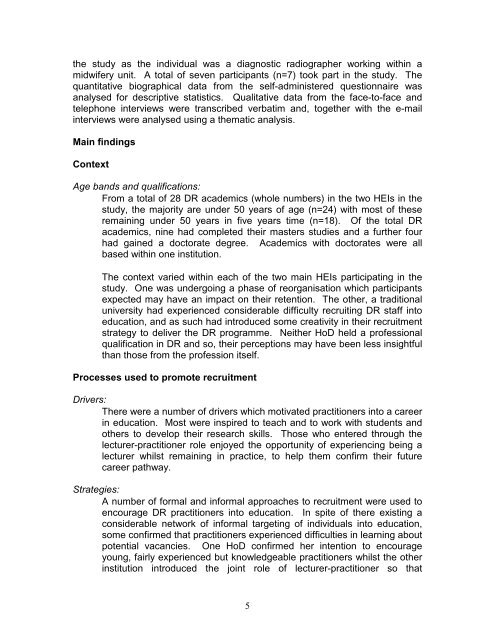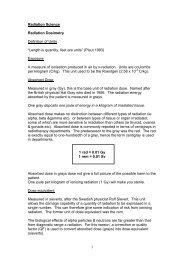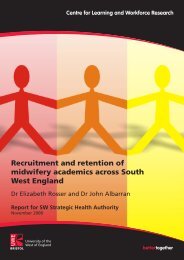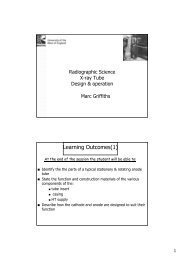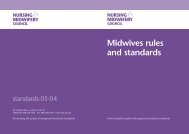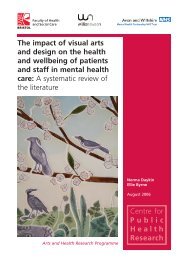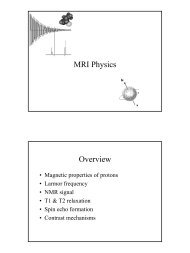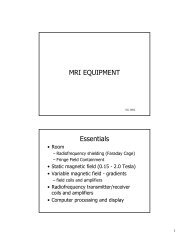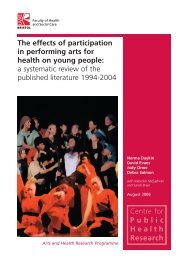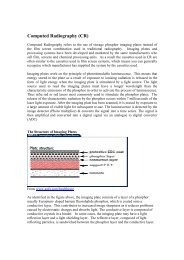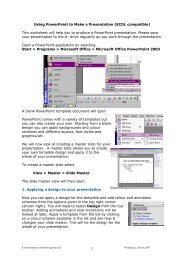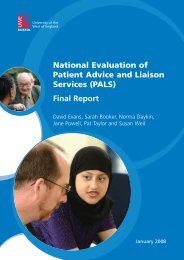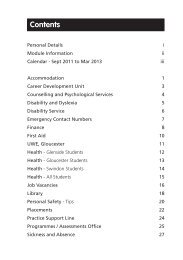Recruitment and retention of diagnostic radiography academics ...
Recruitment and retention of diagnostic radiography academics ...
Recruitment and retention of diagnostic radiography academics ...
- No tags were found...
You also want an ePaper? Increase the reach of your titles
YUMPU automatically turns print PDFs into web optimized ePapers that Google loves.
the study as the individual was a <strong>diagnostic</strong> radiographer working within amidwifery unit. A total <strong>of</strong> seven participants (n=7) took part in the study. Thequantitative biographical data from the self-administered questionnaire wasanalysed for descriptive statistics. Qualitative data from the face-to-face <strong>and</strong>telephone interviews were transcribed verbatim <strong>and</strong>, together with the e-mailinterviews were analysed using a thematic analysis.Main findingsContextAge b<strong>and</strong>s <strong>and</strong> qualifications:• From a total <strong>of</strong> 28 DR <strong>academics</strong> (whole numbers) in the two HEIs in thestudy, the majority are under 50 years <strong>of</strong> age (n=24) with most <strong>of</strong> theseremaining under 50 years in five years time (n=18). Of the total DR<strong>academics</strong>, nine had completed their masters studies <strong>and</strong> a further fourhad gained a doctorate degree. Academics with doctorates were allbased within one institution.• The context varied within each <strong>of</strong> the two main HEIs participating in thestudy. One was undergoing a phase <strong>of</strong> reorganisation which participantsexpected may have an impact on their <strong>retention</strong>. The other, a traditionaluniversity had experienced considerable difficulty recruiting DR staff intoeducation, <strong>and</strong> as such had introduced some creativity in their recruitmentstrategy to deliver the DR programme. Neither HoD held a pr<strong>of</strong>essionalqualification in DR <strong>and</strong> so, their perceptions may have been less insightfulthan those from the pr<strong>of</strong>ession itself.Processes used to promote recruitmentDrivers:• There were a number <strong>of</strong> drivers which motivated practitioners into a careerin education. Most were inspired to teach <strong>and</strong> to work with students <strong>and</strong>others to develop their research skills. Those who entered through thelecturer-practitioner role enjoyed the opportunity <strong>of</strong> experiencing being alecturer whilst remaining in practice, to help them confirm their futurecareer pathway.Strategies:• A number <strong>of</strong> formal <strong>and</strong> informal approaches to recruitment were used toencourage DR practitioners into education. In spite <strong>of</strong> there existing aconsiderable network <strong>of</strong> informal targeting <strong>of</strong> individuals into education,some confirmed that practitioners experienced difficulties in learning aboutpotential vacancies. One HoD confirmed her intention to encourageyoung, fairly experienced but knowledgeable practitioners whilst the otherinstitution introduced the joint role <strong>of</strong> lecturer-practitioner so that5


